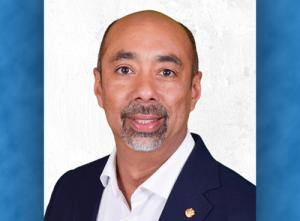Eversource
Roger Kranenburg is Vice President for Energy Strategy and Policy at Eversource.
Energy affordability is a tough subject to grapple with but is on the minds of utility leaders and regulators everywhere as they lead the charge in the energy transition. It is a big picture subject that requires a look at all costs faced by energy and utility companies.

The issues are made even more difficult in that a utility’s customers, and those with affordability challenges, are not a homogeneous group with uniform circumstances. It’s a lot to figure out and it is a subject that requires much information and discussion.
Here, Public Utilities Fortnightly examines the issues surrounding affordability challenges with leaders in the know. You can learn much from Eversource Vice President for Energy Strategy and Policy Roger Kranenburg.
PUF’s Steve Mitnick: What are the main things the industry should be thinking about regarding energy affordability?
Roger Kranenburg: We are laser-focused with our states and regulators on energy affordability for customers, which is a challenge that we can only address in service of our customers and communities by working constructively together. One priority is the impact of rising bills and high energy costs on people and businesses.
Associated with that is what the industry calls share of wallet, and, if we’re successful, how we will be electrifying a lot of current energy consumption, specifically transportation. With traditional bill structures ultimately driven by usage, we have to be mindful of increasing demand for electricity.
So, as we’re bringing that consumption onto the electric bill, the electric bill can rise more rapidly. For the analysis, you can look at it as share of wallet for all energy and whether transitioning to electric consumption from other energy sources replaces those other energy costs, but from the consumer perspective, they’re going to react to the increase of the electric bill.
That’s how I think of affordability; conventional uses and bill increases associated with that and then bringing additional consumption onto the bill.
In addition, we’re going from a period of low-load growth, and we created a lot of excess capacity from energy efficiency, solar, and wind investments. We created excess capacity, and we used that.
We had the privilege of using that excess capacity and now we’re going into an investment cycle where we don’t have that capacity compared to the demand growth, so we’re going to have to make investments in new infrastructure to ensure reliability for our customers.
With that, there are a couple of things going on. One is the cost of those investments per unit have now increased significantly because of inflation and supply-chain challenges. Where you’re working off of depreciation before, now you’re going to be working off of new investment at a much higher level than previously.
There’s also a temporal challenge, with electric vehicles, data centers, and substation investments. Those decisions to enable serving that load are made about five-to-seven years before the load shows up in earnest.
It’s carrying five-to-seven years of costs before seeing the benefits. The long-term looks great, but in the short-term, you’re going to be challenged by the impact on rates.
For data centers it’s similar, and the solution is to make sure the traditional residents and businesses are protected by having these large investments guaranteed by folks with significant balance sheets.
Whereas, if you’re looking at more load growth for electric vehicles and to some extent heating, you have to support these lumpy sorts of investments like substations in anticipation of the load. If not done properly, you won’t be ready to serve that load. That’s going to be a challenge.
PUF: Talk about the upward pressures on costs and how that’s driving increases in bills.
Roger Kranenburg: We talked about the investment and the inflation that you’re playing into. There’s also an increase in demand for some of that equipment like substation equipment, from the data center industry, as well as supply-chain challenges across almost every sector of our economy.
You’re seeing an expansion in costs because of the high demand and an industry that’s willing to pay premiums for that equipment because of the value they derive from it. Also, their margins are so high compared to traditional utility business, which is steady.
There are also policy costs for the energy transition, energy efficiency, renewable energy credits, and other priorities that appear on the bill.
The other dynamic is I’m convinced you’re going to see natural gas prices increase – the commodity price increase – because LNG exports combined with data center demand will put upward pressure on natural gas prices. That tends to set electricity prices and are already high in our region due to supply constraints and demand. That eats into a lot of that headroom that was there before, to layer in these costs.
The other big uncertainty is what’s going to happen in the next four years. The federal government may not be as willing to contribute as much as in a prior administration to the energy transition.
That puts more burden on the states and the consumers in those states to support the transition if they want to continue on that path. So, there could be more upward pressure.
There’s one key area of downward pressure, and that’s if we are successful, which I think we will be because I’m bullish on electric vehicles. That’s an area that could put downward pressure on rates, if we do it properly. I think we will do it properly because of bringing in load and using excess capacity overnight, for example.
It’s taking essentially a fixed-cost business and bringing more load onto it without bringing a lot of additional costs, if done right. It’ll put downward pressure on the cents per kilowatt-hour, both for fleets, as well as individually owned vehicles. That’s one area of the transition that could help put downward pressure on rates.
PUF: There are households having trouble paying bills.
Roger Kranenburg: It’ll be particularly burdensome on the folks who are not making ends meet because it’s much more impactful, particularly when you think about share of wallet. Even in the wealthier households, there will be a reaction because no one likes to pay more for something.
This is my interpretation of the election; we can talk about the rate of inflation and how the rate of inflation has come down. People react to their total grocery bill, which has increased.
Saying, “By the way, the bills would’ve been higher if the rate of inflation was higher,” doesn’t resonate. I think you’ll get a similar reaction to, “Wow, look at my bill.”
PUF: What can utilities and utilities in partnership with the utility regulators do to help with higher energy bills?
Roger Kranenburg: The constructive regulatory environment is necessary. These are important for the community. So, if less than constructive, it will increase costs even more, and the cost of capital. At the same time, you’re deploying a lot of capital. The industry is working on communicating share of wallet.
Look at your entire energy consumption. Using more automation especially to assist in reliability and resiliency with the storms and the weather that we’re facing, continuing to reduce costs, operating costs, and making these investments for the long term.
All that can be done. One of the off-the-wall ideas – I don’t know how practical – is potentially taking the consumption for transportation off the electric bill. Right now, most people put their gas consumption on a credit card. That’s definitely an out-there thought.
But it may be something along those lines as electric vehicle adoption and consumption goes up, because I’m bullish on electric cars, especially if you look at the bulk of the market. I recently drove a new smaller car; I’m a car guy. The engines are high revving, turbocharged, and these are nervous cars, whereas an electric car is a much smoother ride.
It is a much better product, and you’re seeing consumers react to that. You’re going to see that transportation consumption and some of the things I shared with you around share of wallet.
PUF: The ability to drive down overall cost, electric vehicles being one of those downward pressures. What do you mean by doing it right?
Roger Kranenburg: If you don’t do it right, you’re bringing in the electric vehicle load and making a lot of investment to accommodate charging whenever. A simple example is just letting people charge whenever they want to charge, with spikes in consumption, which would require putting in transformers and things like that.
We’re big fans of managed charging. When you get home in the evening, you plug in your electric vehicle. You don’t do anything any different. The electric vehicle doesn’t charge until it’s a good time to charge.
From a consumer’s perspective, you’re not asked to do much. The electric vehicle is plugged in and the consumer cares that the electric vehicle is ready to serve its purpose, so think of iPhone charging, we measure that by it’s fully charged.
It doesn’t have to be fully charged. But consumers are comfortable when we wake up in the morning and the iPhone is fully charged. We’re probably going to be the same with the cars.
It’s not that difficult because it’s an aggregate. There’s going to be a bell curve, et cetera. It would be maybe an hour or two hours of charging within a twelve-hour window. It’s easy to do, but if not done right, then we’re going to be building transformers and not putting as much downward pressure benefit as you could.
PUF: Talk about the role of utilities and conversations around energy affordability and affordability generally.
Roger Kranenburg: Affordability generally, it’s a constructive conversation between the regulators and utilities because they’re all trying to serve the public and the businesses of our communities. A constructive conversation where we come to an agreement of what’s necessary, and then that execution is supported.
I’ll use an example. In Massachusetts; we have the Electric Sector Modernization Plan. For that we got together with the Massachusetts government. The gist was, “Okay, what do we think is necessary from an infrastructure perspective to meet Massachusetts’ decarbonization and electrification goals? Let’s go through this together and come to an agreement around making the investments.”
Then, we’re working together to justify and be transparent about why we’re doing what we’re doing. Because one of the challenges is if you don’t do it properly and investments aren’t made, then it impacts reliability and resiliency for customers who are ultimately relying on our service constantly.
If you’re not prepared for this increased load, which drives economic value to the community, customers will understandably be frustrated if reliability suffers. If you say, “No, we are just going to hold prices down,” you’re not serving the community well.
The other role of utilities with the regulators has to do with the burden being heavier on the lower-income communities. A part of utility rates is a bit like the tax code, reallocating that burden for the benefit of the entire community.
It’s a very collaborative approach. An antagonistic approach doesn’t serve the community.
Affordability conversations at fortnightly.com:



